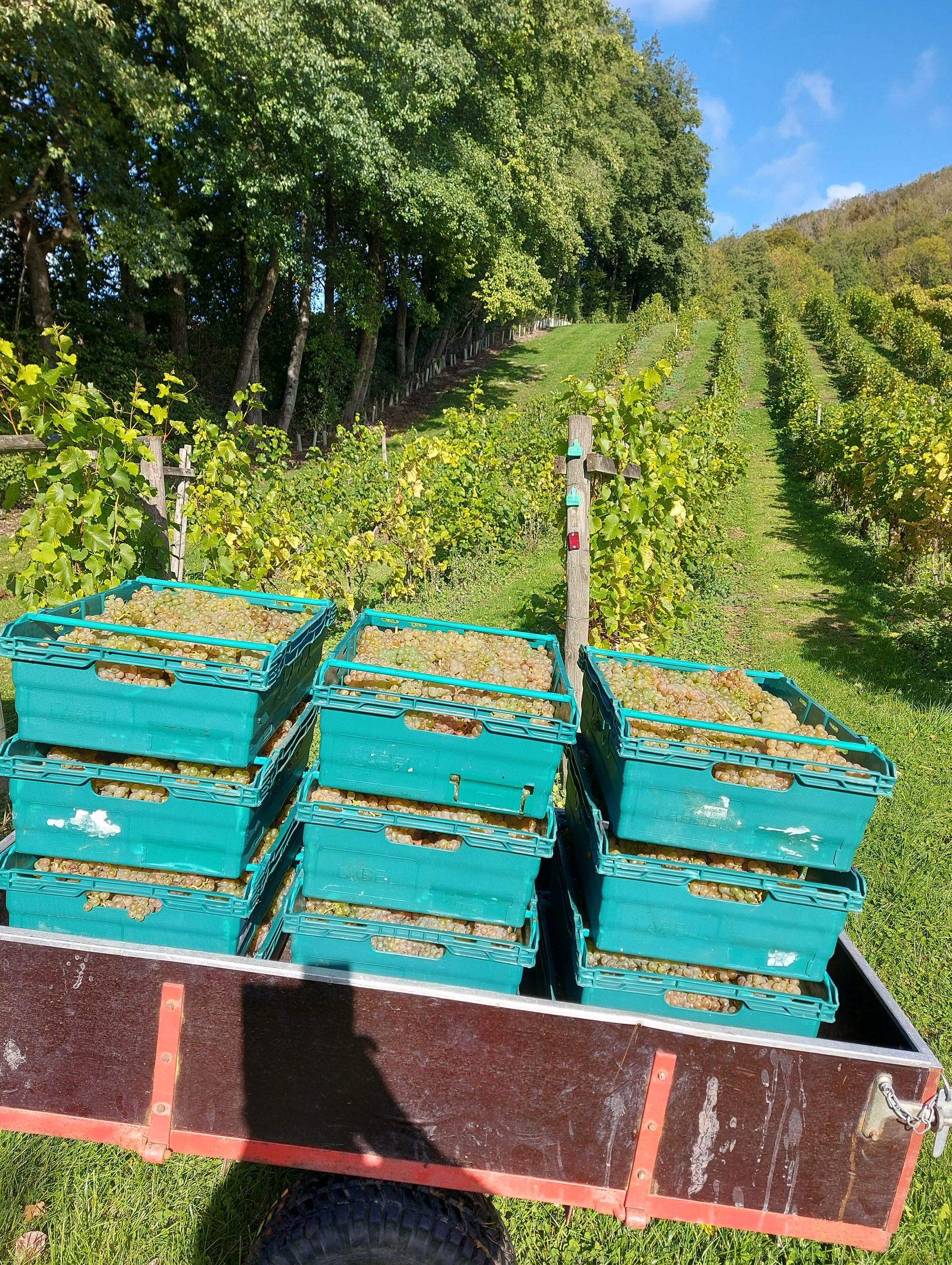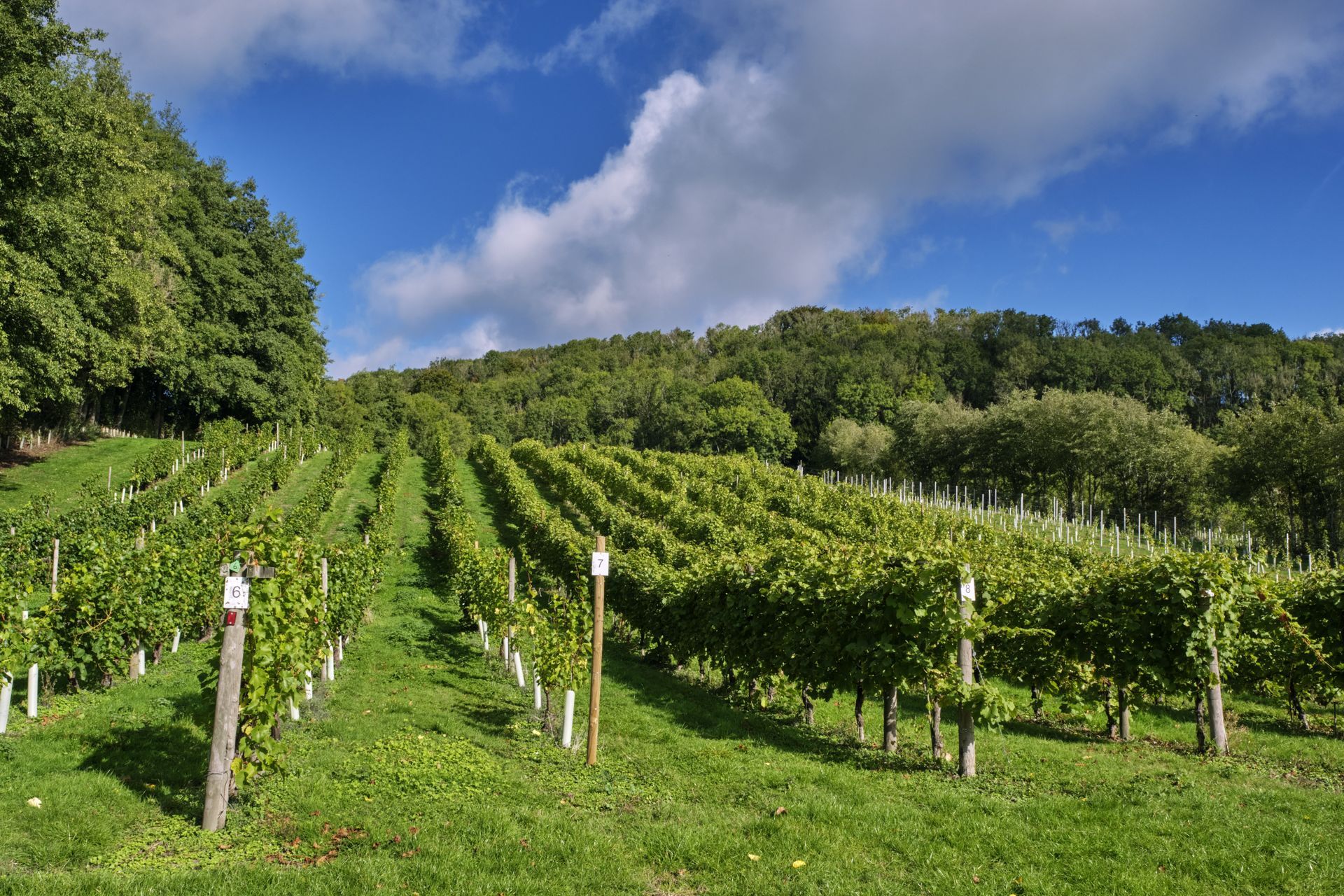Jonathan’s Vineyard Blog - January 2022
In a vineyard there is little time for either rest or complacency; no sooner than the Christmas decorations have been dismantled and we are back out in the vineyard undertaking a task which is critically important to the year ahead … pruning.
Our vines are grown on a trellising system known as ‘Double Guyot’ and on the whole they are mature (some were planted as far back as 1985). Each year the old fruiting canes are completely cut out and replaced by two new shoots (hence ‘double’ guyot) that have arisen from the replacement stub which was left the previous year. Great care must be taken to select healthy, well ripened growth that is conveniently placed in a central position. These new shoots have to be pruned according to the density of planting and the buds on the shoots. The two fruiting canes of the ‘double guyot’ vine should carry 10 buds per square metre of ground area. For example, in our vineyard where the vines are spaced 1.5 metres apart in the row with the rows 2.0 metres apart there is a ground area of 3 square metres for each vine. At this density, 30 buds can be left, i.e. 15 buds on each cane.
Pruning can take place from January onwards: early pruning leads to an earlier bud burst. If the pruning is delayed until March or April, the vine may ‘bleed’, which can appear alarming but does not appear to weaken the vine itself. In general we aim to strike a medium and ensure that our pruning is started in January with the intention of finishing by the end of March.
If snow/frost is on the ground during January or February then admire the pretty scenery whilst sparing a thought for our pruning team, who will be out there in all weathers striving to create the perfect vine for the coming year. It is on days such as these that my hip flask filled with sloe gin comes in very handy indeed!
I wish you all a prosperous, happy, and healthy 2022.







